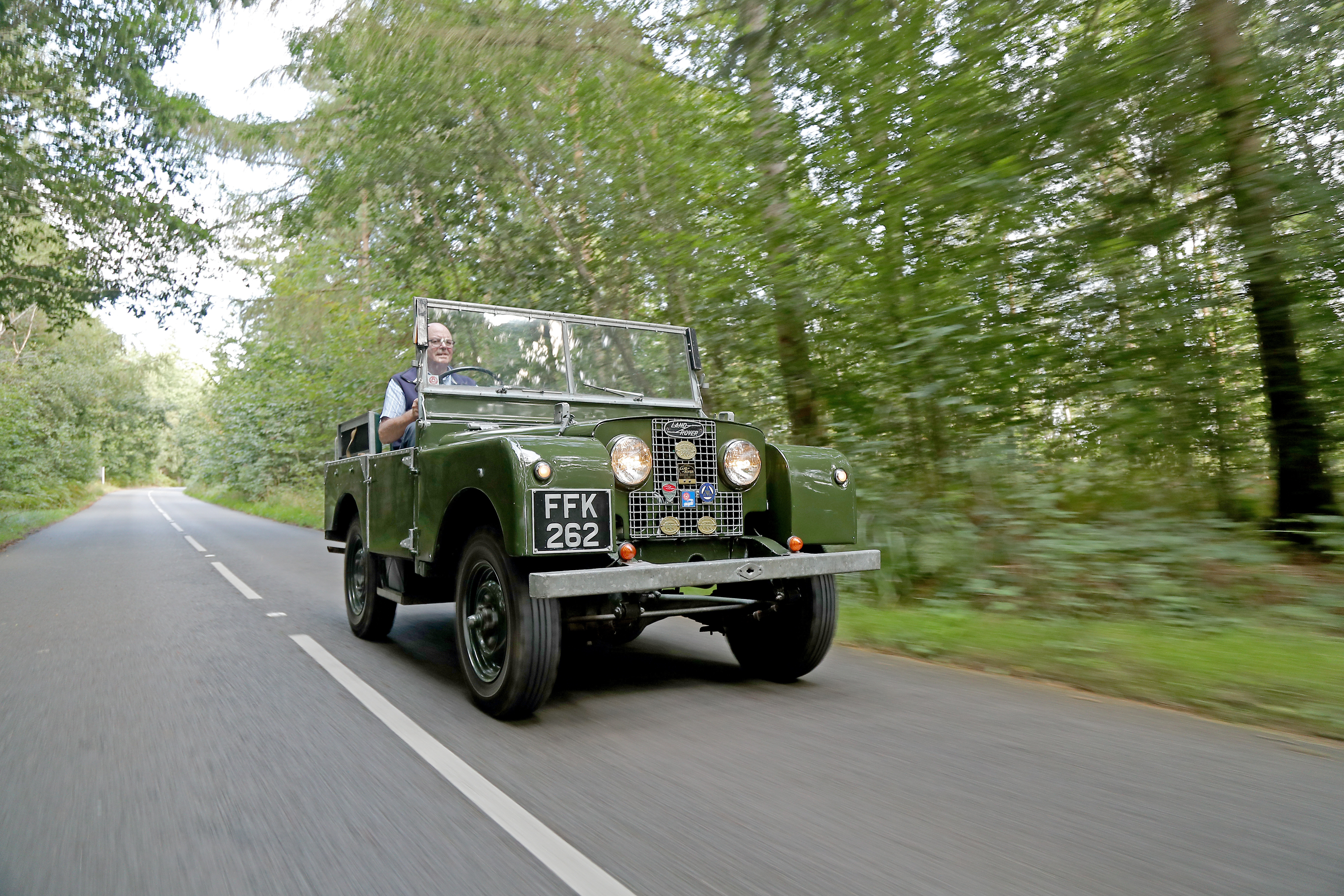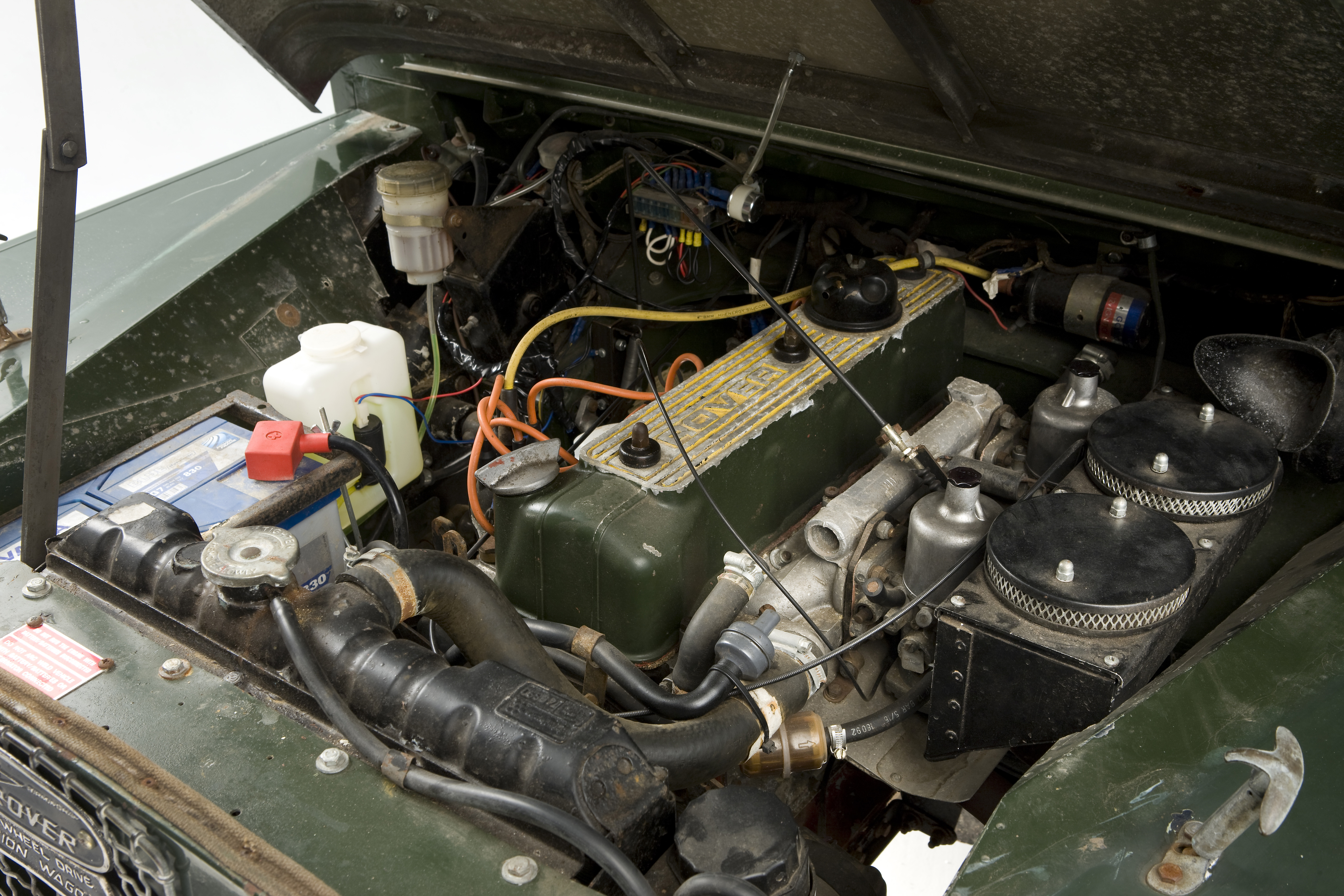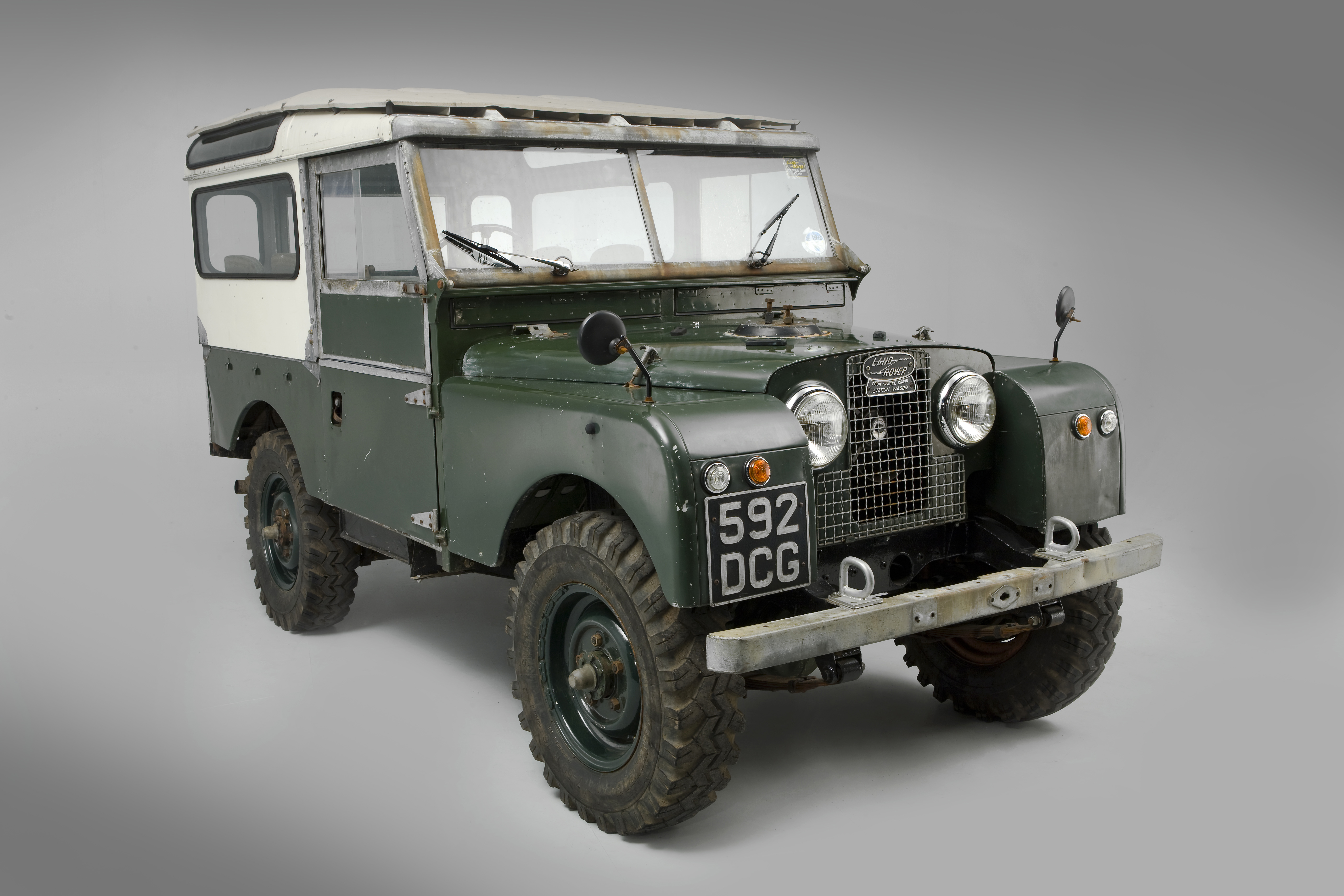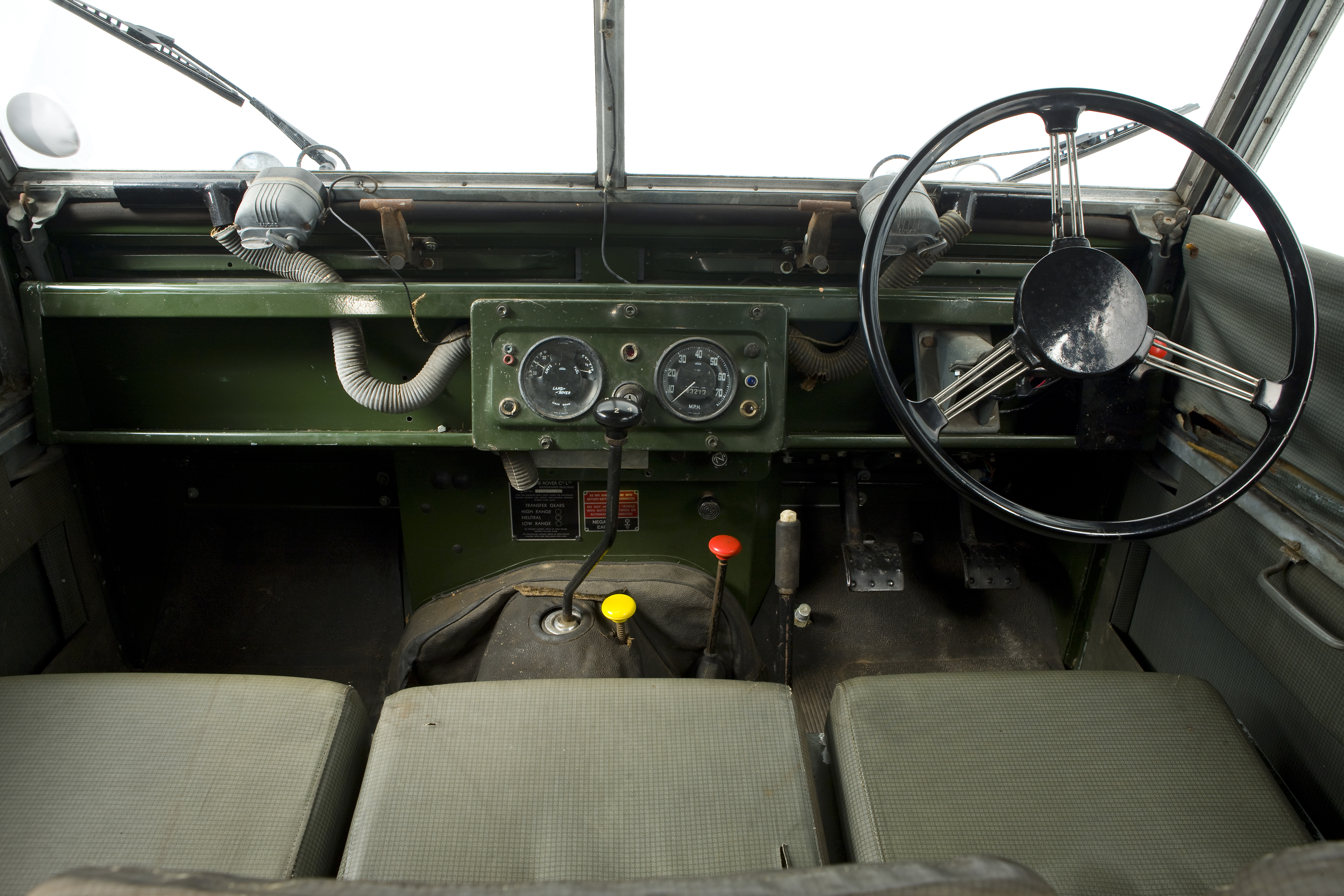
Land Rover Series 1: The Iconic Off-Road Pioneer
Important Disclaimer: Whilst we take every care to ensure that our website and information herein is as accurate as possible, errors and omissions are excepted. Please tell us if you think something is wrong.
The Land Rover Series 1 is a remarkable vehicle deeply rooted in automotive history. It was inspired by the World War II jeep, first produced by the Rover Company in 1948. This compact off-road vehicle quickly became a favourite for its versatility and durability.
It’s widely recognised as the first mass-produced civilian four-wheel-drive car with doors and an available hard roof, making it a pioneer.
These classic vehicles have developed a cult following over the years. Early models and coachbuilt versions, such as the Tickford-bodied Station Wagon, are desirable. Collectors and enthusiasts are often drawn to the Series 1 for its historical significance and iconic design. The recent launch of the new Defender has also sparked renewed interest, driving up prices for these vintage models.
If you’re considering owning a piece of automotive history, the Land Rover Series 1 is a worthy investment. With affordable and extravagant models, there’s a Series 1 for every enthusiast.
Development and history
The Land Rover Series 1 has a fascinating evolution, starting with its conceptualisation by Maurice Wilks and ending with its historic launch at the Amsterdam Motor Show. This journey includes its transition from the Rover P3 to becoming a landmark in off-road vehicle history.
Conceptualisation by Maurice Wilks
Maurice Wilks, a chief designer at the Rover Company, was the visionary behind the Land Rover Series 1. Inspired by the rugged wartime Jeep he used on his farm, Wilks aimed to create a similar vehicle for agricultural and utility purposes.
In 1947, work began on the prototype under his guidance. This early model was tested rigorously on Wilks’ farm, showcasing its robust design and practicality. Wilks’ vision was to develop a versatile four-wheel-drive vehicle to tackle various terrains, later becoming a key selling point.
Launch at Amsterdam Motor Show
The Land Rover Series 1 made its public debut at the Amsterdam Motor Show on 30 April 1948. This pivotal event introduced the world to this innovative vehicle. The initial reception was enthusiastic, with attendees impressed by its rugged construction and functional design.
Pre-production models featured a galvanised chassis and integrated front bumper, highlighting the Land Rover’s durability. At its launch, the vehicle had a price tag of £450, making it accessible to a broad audience. The Amsterdam Motor Show started the Land Rover’s journey to become iconic.

The transition from Rover P3 to Land Rover Series
The Land Rover Series 1 development involved a significant transition from the Rover P3 saloon car. The Series 1 used the 1595cc inlet-over-exhaust engine initially developed for the Rover P3. This engine provided reliable performance and was well-suited to the more demanding requirements of an off-road vehicle.
Adapting the engine and other components from the Rover P3 allowed for cost-efficient production and ensured reliability. Over the next decade, the vehicle continuously improved while maintaining the core elements that defined its character. This transition played a crucial role in the success and longevity of the Land Rover Series, marking it as a versatile and dependable option in the market.
Design and engineering
The Land Rover Series 1 was a groundbreaking vehicle with several innovative design elements. Its body was a unique aluminium alloy, and the early models had an unconventional steering setup.
Innovative chassis and bodywork
The Land Rover Series 1 chassis was robust and practical. It featured a high strength and rigidity box-section frame, enabling the Series 1 to handle rugged terrain and heavy loads effectively.
The bodywork comprised flat panels, which made the manufacturing process straightforward. The flat design also allowed for easier repairs in the field - a crucial feature for agricultural and military users.
Simple, constant-radius folds enabled hand-beaten panel construction. This method minimised production costs and facilitated easy assembly and maintenance.
Birmabright and aluminium use
The Land Rover Series 1’s body was primarily constructed from Birmabright, an aluminium alloy. Birmabright was chosen for several reasons. It is lightweight, corrosion-resistant and durable, which makes the vehicle more resilient in harsh environments.
Aluminium panels helped reduce the vehicle’s weight, improving fuel efficiency and handling. This material was particularly advantageous in agricultural and off-road settings where rust and damage from environmental exposure were significant concerns.
Incorporating Birmabright distinguished Land Rover from many other vehicles of its time, offering an edge in longevity and performance.
Centre steer configuration
The unique centre steer configuration was one of the most exciting aspects of the early Land Rover Series 1 models. This setup placed the steering wheel in the vehicle’s centre rather than on the left or right side.
This arrangement aimed to make the vehicle equally suitable for both left-hand and right-hand drive markets. It was also expected to facilitate agricultural tasks, allowing the driver to better view the edges of fields and farm equipment.
While innovative, the centre steer was purely a prototype used for testing due to practicality issues and user feedback. All production models had a more conventional right-hand or left-hand steering configuration depending on the market.

Models and variants
The Land Rover Series I had several models and specialised adaptations designed for various purposes, from general use to military applications.
The original 80-inch and Tickford Station Wagon
The first Land Rover Series I model, introduced in 1948, featured an 80-inch wheelbase. It was inspired by the World War II Jeep and designed for versatility and rugged terrain.
A notable variant was the Tickford Station Wagon, a seven-seater with a body made by Tickford. Initially, this model was available with a light green paint job and later in the more familiar bronze green. Its alloy body over a wooden frame offered a unique combination of durability and style.
Introduction of 86-inch and 107-inch models
In 1954, Land Rover introduced the 86-inch and 107-inch models, shifting to longer wheelbases. These models improved the vehicle’s load capacity, making them ideal for agricultural and industrial use.
The 86-inch version retained the short wheelbase (SWB) configuration, while the 107-inch version was considered a long wheelbase (LWB) model. Both models offered enhanced stability and space, especially useful for farmers transporting goods and equipment.
Specialised applications and Series 1 adaptations
The Land Rover Series I was adapted for various specialised applications, including military and civilian uses. Military versions were common and featured modifications for durability and utility in harsh conditions.
The Series I saw adaptations such as fire engines and mobile workshops for civilian uses. The ability to hose down the interior made these vehicles exceptionally practical for agricultural and industrial settings. This flexibility solidified the Series I’s reputation as a versatile and reliable off-road vehicle.
Technical innovation and features
The Land Rover Series 1 introduced several significant technical innovations that enhanced its performance and usability. These advancements encompassed engine configurations, transmission systems, off-road capabilities and transitions to more powerful engines.
Early engine and gearbox configurations
The first Series 1 Land Rovers, produced between 1948 and 1950, featured a 1.6-litre four-cylinder petrol engine sourced from the Rover P3. With a displacement of 1595 cc, this engine was renowned for its reliability and impressive low-end torque, making it exceptionally well-suited for off-road use and various demanding applications.
The transmission system comprised a four-speed gearbox. Notably, synchromesh was available only on third and fourth gears, requiring specific techniques for smooth shifting in lower gears. Including a two-speed transfer box enhanced its versatility, allowing for effective power distribution in both on- and off-road situations.
Off-road capabilities and suspension
The Land Rover Series 1 was renowned for its off-road prowess, achieved through a robust suspension system and a two-speed transfer box. The suspension featured leaf springs that provided excellent articulation, crucial for tackling challenging terrains.
The short overhangs and high ground clearance further enhanced its off-road capabilities. These features allowed the vehicle to navigate obstacles with ease. A durable chassis and four-wheel drive ensured that it could be relied on in rugged environments.
Transition to diesel and larger petrol engines
As production continued, the Series 1 saw the introduction of larger engines. Initially, a 2.0-litre petrol engine replaced the 1.6-litre version. This engine increased power and improved overall performance.
Diesel engines also became available, providing an alternative for those seeking better fuel efficiency and torque. The 2.0-litre diesel engine, in particular, offered a balance of power and efficiency, making it suitable for both on-road and off-road applications. These transitions cemented the Series 1 as a versatile and robust vehicle.
Cultural impact and legacy
The Land Rover Series I has left a lasting impression on British culture and the automotive industry. Its significance extends far beyond its utilitarian roots, influencing later models and remaining a quintessential symbol of British engineering.
Role in post-war Britain and the Commonwealth
After World War II, Britain needed a versatile vehicle for military and civilian use. The Land Rover Series I became the backbone of agriculture, mining and exploration. Its design features a simple yet robust aluminium body, making it durable and lightweight. This versatility made it famous throughout the Commonwealth, where it played a crucial role in rebuilding and development efforts. Its ability to navigate rugged terrains made it indispensable in remote areas, further cementing its reputation.

Continued influence on later Land Rover models
Subsequent models like Series II and Series III bear the influence of Series I. While improvements were made, the core principles of durability, simplicity and off-road capability were retained. The Land Rover Defender, which came much later, also draws heavily from the original design. Innovations such as the permanent four-wheel drive and coil-spring suspension in later models owe much to the foundation set by the Series I. This continued legacy underscores the importance of Series I in Land Rover’s design philosophy.
Status as a classic British icon
The Land Rover Series I is more than just a vehicle; it symbolises British resilience and ingenuity. Its iconic shape and versatility have earned it a place in automotive history. As a classic car, it is highly sought after by collectors and enthusiasts. Participating in restoration projects or owning a Series I is often seen as a nod to British heritage. Vehicles like the one owned by Sir Jim Ratcliffe highlight its prestigious status and enduring appeal. The Series I remains a testament to a period in British history when practical design met a pioneering spirit.
Frequently Asked Questions (FAQs)
The Land Rover Series 1 is a classic vehicle with unique features, engine specifications and historical value. Understanding its characteristics and where to find it can help you make informed decisions about this iconic car.
What are the distinctive features of a Series 1 Land Rover?
The Series 1 Land Rover, produced from 1948 to 1957, is known for its rugged design and utility features. It originally came with a short 80-inch wheelbase and an 88-inch version. These vehicles had hydraulically actuated 9-inch drum brakes and beam-type axles with leaf springs.
How can one determine the value of a Series 1 Land Rover?
The value of a Series 1 Land Rover can vary widely based on its condition, history and originality. Early models, especially those with original parts, tend to fetch higher prices. Proper maintenance and a documented history can also enhance its value. Classic car appraisers or dealers can provide detailed evaluations.
What improvements were made in the Series 2 Land Rover compared to the Series 1?
The Series 2 Land Rover, introduced in 1958, featured several improvements. It had a broader, more rounded body and a larger 2.25-litre engine. The chassis and suspension were also enhanced for better durability and comfort.
Where might one find a Series 1 Land Rover for sale in the UK?
You can find Series 1 Land Rovers for sale through classic car dealerships, auctions and online platforms.
Can you describe the engine specifications of a Land Rover Series 1?
The Series 1 started with a 1.6-litre (1,595cc) inline-four engine producing 50hp, derived from the Rover P3. It was later upgraded to a 2.0-litre engine. These engines were known for their reliability and simplicity, making them suitable for rugged terrain and off-road use.
Is there a dedicated club or society for Land Rover Series 1 enthusiasts?
Several clubs and societies are dedicated to Land Rover Series 1 enthusiasts. They offer a platform for owners to share knowledge, source parts and participate in events. Joining such a club can provide valuable support and a sense of community.
Chris Wrigley
Commercial Manager
Chris has been a car enthusiast since the early 1990’s and got his first Triumph Spitfire in 1996, one of many classics that followed!
Read More About Chris